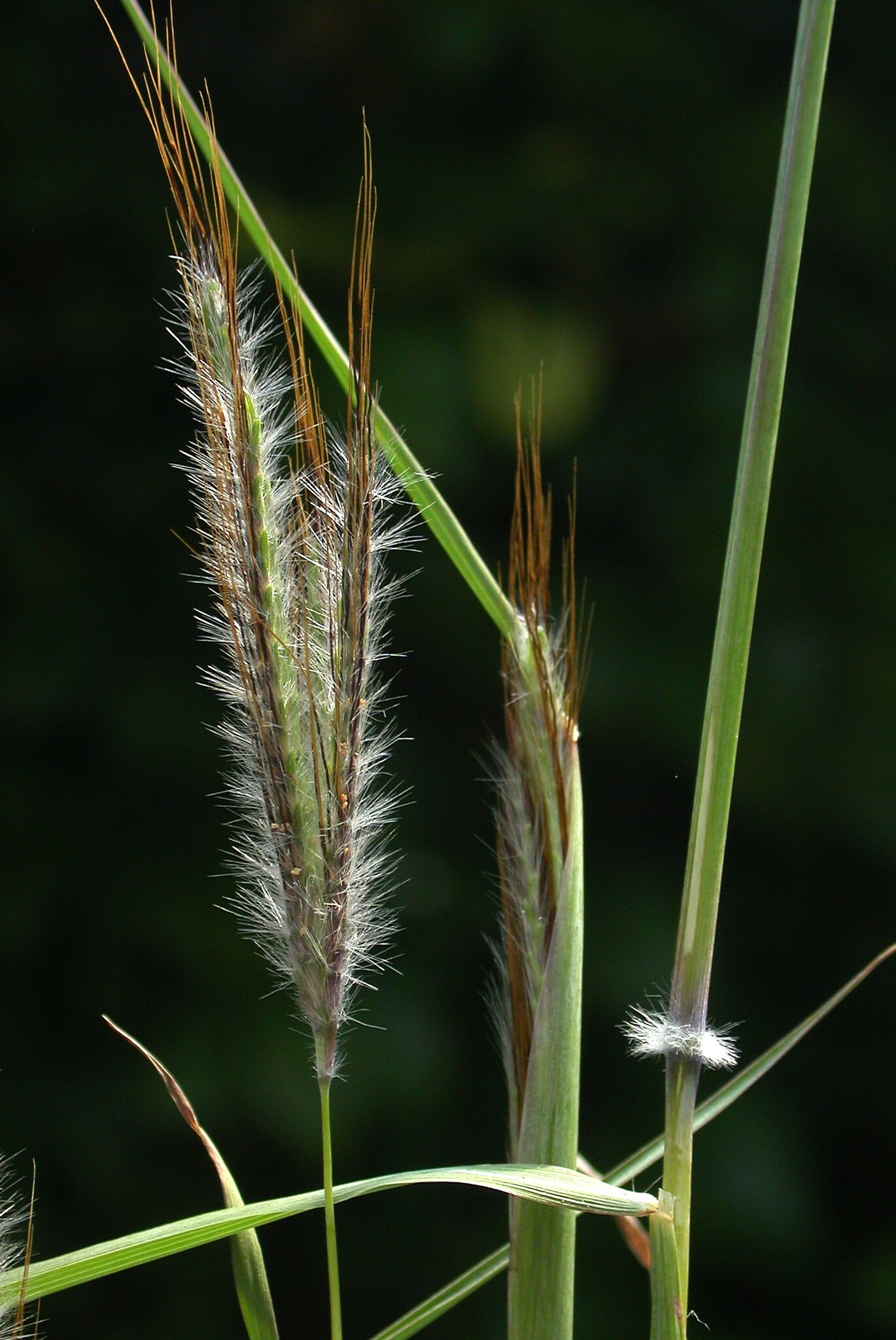
Greek dichia – divided in two, anthos – flower; the inflorescence has sterile sessile spikelets at the base and fertile ones above.
Tufted or rhizomatous annuals or perennials with solid internodes. Leaves flat, narrow, rolled in bud. Ligules membranous, sometimes fringed. Inflorescence with spike-like racemes more or less digitately arranged. Spikelets in 3s at the tip, in pairs elsewhere, the lowermost sessile and bisexual (but sterile at the base of most racemes). Glumes 2, more or less equal, lower glume 2-keeled, 5-9 nerved, upper glume 1-4 nerved. Lower lemma sterile, shorter than the glumes, upper one fertile, awned. Palea reduced or absent, nerveless.
Seed.
D. caricosum and D. sericeum occur in pasture, and D. aristatum is a significant weed species.
More or less digitate inflorescence.
About 15 species from Africa, the Mediterranean, India and the Pacific. Australia has 6 native species.
Source: (2005). Poaceae. In: . Horticultural Flora of South-eastern Australia. Volume 5. Flowering plants. Monocotyledons. The identification of garden and cultivated plants. University of New South Wales Press.
